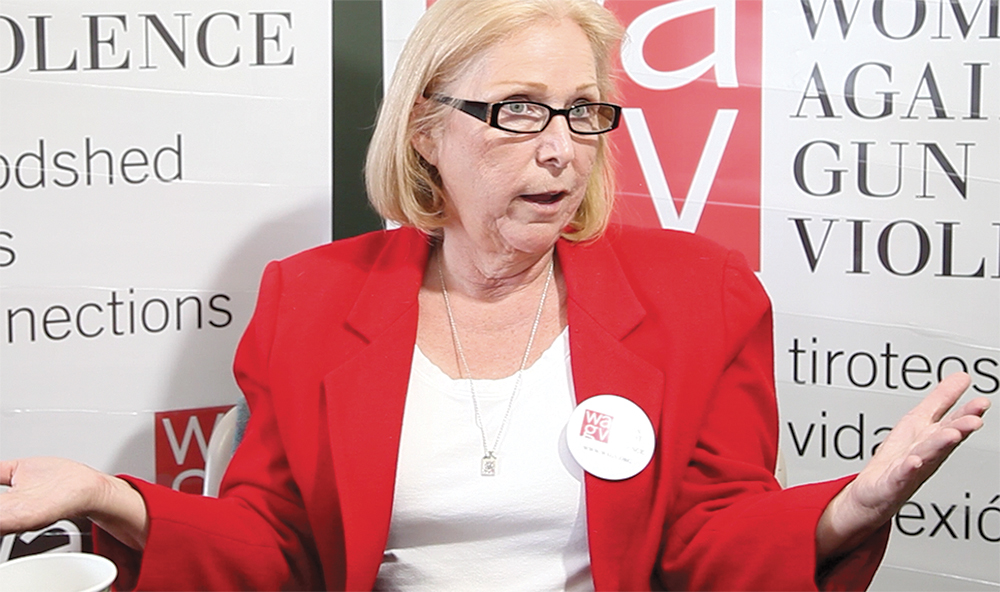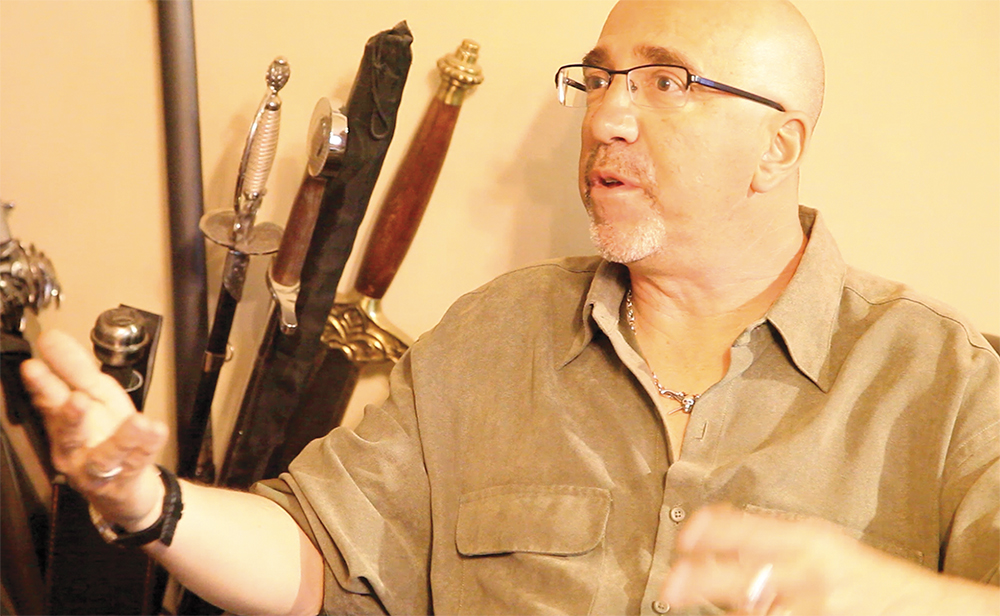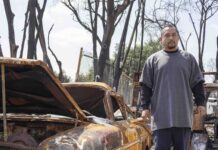Story & Illustrations by Jeremy M. Nation
Photos by John Gutierrez
It is a common fear in the mind of parents that their child might be caught amid screams of terror and shouts of warning as a killer steps slowly, purposefully down a narrow hall.
Students running from him become, in an instant, victims crumbling to the floor, with pools of crimson spreading from their twitching bodies.
The killer stops at a door, listening to the whimpers of young children barricaded in a classroom. The air is tense. His adrenaline is pumping. He forces his way into the room and the screams are silenced, cut short by the deafening report of gunfire.
As sirens close in, the killer moves through the hallways of the facility, violently dispatching those in his path. As police forces approach, the conflict climaxes in a bloody bout of gunfire. And, in the end, no one wins.
This chilling fictitious account fits an archetype that is becoming more commonly reported, which has led to a contentious nationwide debate.
On one side, anti-gun lobbyists argue for tighter regulations on firearms, while pro-gun political pundits say their constitutional rights are being trampled.
Executive Director of Women Against Gun Violence Margot Bennet said that the culture of violence in the United States is exacerbated by the proliferation of guns. Her organization has been working to have background checks become a legally mandated part of all firearms exchanges.

“We’re not against guns, but we do believe in regulation,” Bennet said. “And we’ve found that where there is regulation there are fewer gun deaths and less gun violence.”
Bennet is a proponent of evasion with respect to conflict resolution. She believes that firearms are not a solution to home defense.
“If you’re afraid of where you’re going, don’t go there,” she said.
While avoidance is a tactic that may benefit some, it might not work for everyone, particularly someone who lives in a dangerous neighborhood.
“I would say that you’re creating an atmosphere of fear, because how do you know that anywhere you go is going to be safe from whatever danger there is?” said Hollywood special effects legend and gun owner Mike Tristano, in response to Bennet.
Tristano has made a living primarily with firearms. He has provided consultation in a variety of films and television programs. He said that the portrayal of guns is one-sided in the media.
“What the news reports is basically everything bad that goes wrong, or anything that they can sensationalize,” Tristano said.
Pierce College History Department Chairman Brian Walsh agrees.
“Once you look at the victims, and they get, I guess, a bit more white, a bit more affluent, it does change things. It shouldn’t, but it does. And it changes the media coverage and the perception,” Walsh said.
While opponents of firearms continue to lobby to restrict guns through legislation, the Second Amendment guarantees United States citizens the right to bear arms; which has been interpreted by the Supreme Court as a fundamental right to own firearms as a means of personal protection.

“Let’s face it. We’re a country made from a revolution. So firearms are an important part of our heritage,” Tristano said.
The topic of regulation continues to snowball in political forums. President Barack Obama signed 23 executive orders in January aimed at gun violence.
While there may be unavoidable legislative battles enacting these laws, the administration maintains that they are intended to diminish gun related violence in the United States.
Walsh said some of the executive orders are aimed at allowing medical research to be conducted by the Center for Disease Control. Prior to the order, Congress was forbidden from spending federal money on gun violence as a health issue, despite the large number of hospitalizations that result from it.
Walsh said that Obama’s signing of the executive orders is aimed at allowing medical research to be conducted by the Center for Disease Control.
Prior to the order, Congress was forbidden from spending federal money on gun violence as a health issue, despite the large number of hospitalizations that result from it.
Walsh said that Obama’s signing of the executive orders represents a clear message.
“It was a statement. It was a little bit of a posture, but it was a statement. I’m all in on gun control,” Walsh said.
Walsh added that pandering to rural demographics might hinder Democrats from making any true push in the direction of legislation affecting gun ownership.
Standing in the way of potential legislation are powerful lobbyists, specifically, the NRA, which Tristano and Bennet agree has a leadership that does not necessarily portray the views of the organization’s membership.
Guns are not always central to a violent action, which results in a massive loss of life. A group of men described as members of a rogue international criminal organization took action, and thousands of Americans died. The attacks on 9/11 were greater than any that had taken place on American soil—and not a single shot was fired.
“Most people don’t need a gun to kill someone else,” Tristano said. “You can do it with a bat. You can do it with a car. You can do it with a knife.”
Tristano recounted a man in China with a knife who assaulted children in a school. When asked how they stopped the assailant, Tristano replied, “With a gun.”
On April 15, 2013, two bombs exploded near the finish line of the Boston Marathon.
According to MIT News, on April 18th, the suspects at large in the Boston bombing engaged MIT Campus Police, resulting in the alleged shooting death of Officer Sean Collier.
The Cambridge Police Department received reports of a carjacking and were in pursuit of a vehicle fitting the description when suspects exchanged gunfire and reportedly tossed explosive devices from the vehicle. During the course the police pursuit, one of the suspects identified as Tamerlan Tsarnaev, 26, was critically injured. He was pronounced dead once transported to a hospital. At least one officer was seriously wounded during the pursuit.
Both suspects in the carjacking have been implicated by the FBI in the Boston Marathon bombings. The remaining suspect, who the FBI identified as Dzhokar Tsarnaev, 19, was considered to be armed and extremely dangerous after he escaped local, state and federal authorities only to be captured in the nearby town of Watertown a short time later.
According to CNN, the deceased suspect “was wearing explosives and a triggering device when he died.”
These violent actions breathe life again into the issues concerning public safety, further blurring the complicated line between preserving individual rights and effective regulation.



